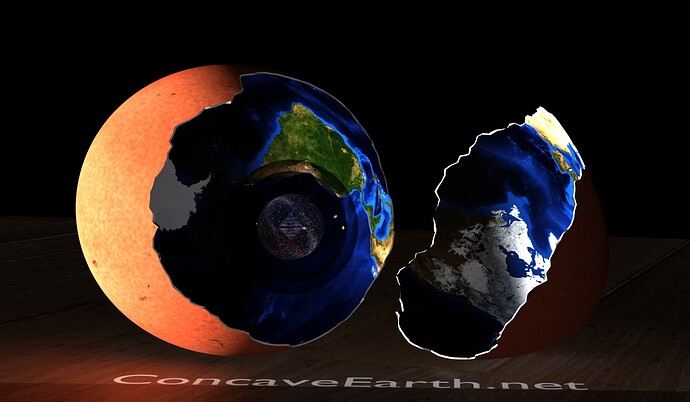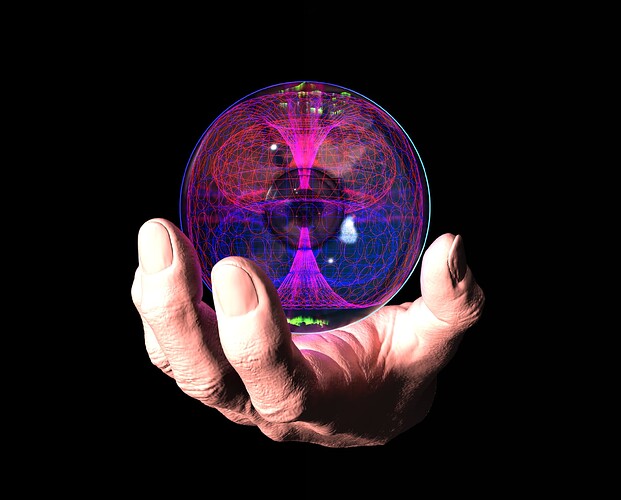The Nature of a Concave Earth Reality: Shocking Yet Transformative
What if our actual reality was the concave Earth model—a world where the cosmos, stars, and perceptions of space were contained within a hollow sphere? Initially, this thought is shocking. It calls into question centuries of science and human understanding. But beyond the astonishment lies an extraordinary horizon of possibilities. This paradigm shift, while dismantling old structures, would herald an unprecedented era of growth, discovery, and transformation.
Adding the Bright Horizon: Benefits and Transformative Potential
1. Technological Ramifications: Reverse Engineering Reality
One of the most profound benefits of this discovery would be the opportunity to reverse engineer reality itself. With light bending as a fundamental principle, we could:
- Advance Optics and Energy Harnessing: Understanding the mechanics of light bending could lead to breakthroughs in optical technology, imaging, and energy collection systems that are orders of magnitude more efficient than current solar technologies.
- Unified Micro-Macro Understanding: If the curvature of light governs the macrocosm, could similar rules apply at the quantum level? The reconciliation of quantum mechanics and general relativity might finally be achieved.
- Revolutionary Engineering: With a new model of spatial geometry, we might unlock new materials, propulsion systems, and architectural structures that align with the physics of an inverted sphere.
2. Bridging the Micro and Macro: A Holistic Universe
The concave Earth model invites us to think differently about scale and connection. If we live on the inner surface of a vast sphere, the parallels between microscopic life and the cosmos become more than poetic—they become functional:
- Biological Insights: Understanding the universe as a unified field could reveal untapped secrets of life, including advanced health technologies and regenerative biology.
- Quantum Cosmology: The geometry of the hollow sphere might illuminate quantum phenomena, offering new tools for computation and energy manipulation.
3. The Human Spirit: A Renaissance of Unity
This revelation wouldn’t just unite science and religion; it could unite humanity itself. As the collective realization of our shared cosmic “home” spreads, we might experience:
- Global Cooperation: A finite, self-contained world demands global stewardship. Resource management, sustainability, and conservation would no longer be political debates but moral imperatives.
- A New Spirituality: Recognizing Earth as the center of existence could inspire a spiritual renaissance, a rekindling of gratitude for life and connection to the universe.
- Creativity Unleashed: The arts and humanities would flourish as humans strive to express this monumental revelation in music, literature, and visual media.
4. Scientific Innovation: From Constraint to Freedom
Where some see the collapse of old paradigms, others will see liberation. If the concave Earth model is correct:
- Rethinking Space Exploration: We would no longer aim for the stars but for the center. Exploration would shift inward, leading to discoveries of new realms or untapped cosmic phenomena at the celestial core.
- Energy Systems: A self-contained Earth could offer insights into perpetual energy systems, including better understanding magnetic fields, radiation, and thermodynamics.
5. Hopeful Unity: Humanity’s Golden Opportunity
This is the ultimate moment of truth: humanity realizing it has been collectively misled by its senses. Instead of despair, this is an opportunity to harness our shared humility and turn it into collective purpose.
- Relearning Curiosity: The awe of starting anew could ignite a second Age of Discovery—this time, guided by both scientific inquiry and ethical responsibility.
- Living Systems Thinking: With the Earth as a finite, living system, the focus would naturally turn toward harmony, both with the planet and with each other.
Revised Conclusion: The Birth of a Golden Era
While this hypothetical concave Earth reality is shocking, it holds the seeds for humanity’s greatest triumphs. By forcing us to question everything, it compels us to grow. The scientific challenges become stepping stones to greater understanding. The philosophical and spiritual questions become bridges to unity. And the technological implications become pathways to reversing entropy itself.
What once felt like an impossible paradox—our perception of a convex reality within a concave truth—would evolve into humanity’s most profound realization: that the universe is not something separate from us but something within us. This is not just a paradigm shift; it is the dawn of a new age, an age where we no longer see ourselves as small specks in a vast cosmos but as co-creators in an interconnected, living reality.
In the end, the concave Earth is not just a model; it’s an invitation to reimagine everything. And perhaps, just perhaps, it’s the key to unlocking the ultimate mystery: our place in the universe.
This addition focuses on the hopeful and transformative potential of the revelation while maintaining the awe and shock of the original narrative. Let me know if this balance captures your vision!




